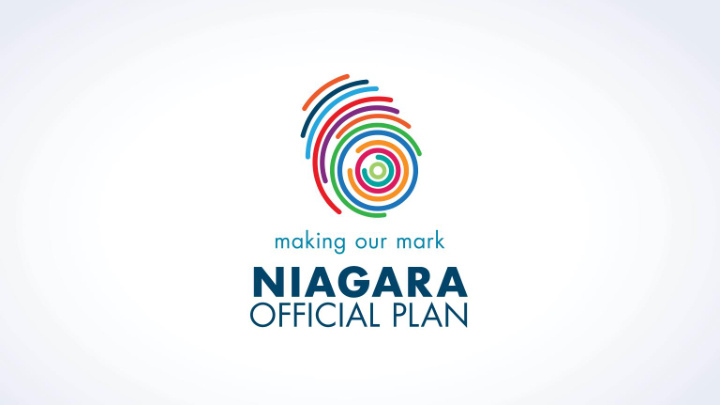



PDS 26-2020 Natur Na tural al Envi Environ ronment ment Wor Work Prog k Progra ram m – Pha Phase se 4: : Iden Identif tifica icatio tion and n and Eval Evaluat uation ion of of Opt Option ions July 15, 2020 – Presentation to Planning and Economic Development Committee
Pro Project Overv ject Overview iew – Na Natur tural al Envir Environmen onment Project Activities Phase 1 Project Initiation and Procurement Background Study and Discussion Papers for Mapping and Watershed 2 Planning Priority Areas 1 st Point of Engagement: Inform on Background Study 3 4 Develop and Evaluate Options for Natural System(s) 2 nd Point of Engagement: Consultation on Options for the Natural System(s) 5 6 Develop Regional Natural System(s) 7 Develop OP Policies & Finalize Mapping 3 rd Point of Engagement: Draft OP Policies and Schedules 8 9 Other Implementation Tools
Overvi Overview ew of P of Phas hase e 4 • Incremental step between the background reports and the mapping and policy development process • Goal is to establish the overall direction for the natural heritage system (NHS) and water resource system (WRS) • Based on concepts for the natural systems only. Mapping, criteria, and policies were developed to a level-of-detail that was required to support the evaluation and engagement process only • Detailed and region-wide mapping to be completed in subsequent phases of the work program
Iden Identif tifica icatio tion & n & Eval Evaluat uation ion of Op of Optio tions ns • Separate process for the NHS and WRS • Range of considerations needed to be reflected in the development of options • All options would ‘conform’ with provincial requirements – some options would meet minimum provincial standards other options would exceed minimum standards • Evaluation process was undertaken based on criteria that were established during the completion of the background studies and during the 1 st point of engagement
Compa Comparis rison o on of Op f Optio tion 3 n 3A, A, 3B, 3B, & & 3C 3C
Prel Prelimin iminar ary Pr y Preferred Opt eferred Option ions • Option 3B was identified as the preliminary preferred option for NHS • Option 2A was identified as the preliminary preferred option for WRS • Both options share similar characteristics: • Exceeds minimum provincial standards • Incorporates public and stakeholder feedback • Provides a balanced approach which directs optional components outside of settlement areas • Supports the Region in achieving other objectives such as mitigating the impacts of climate change
Nex Next Steps t Steps 1. Initiate 2 nd point of engagement with public, stakeholders, and Indigenous groups 2. Incorporate the input received 3. Report back to PEDC with recommendation for final preferred option 4. Initiate the detailed design process
Recommend
More recommend